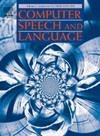儿童语言习得的语言诊断模型
IF 3.4
3区 计算机科学
Q2 COMPUTER SCIENCE, ARTIFICIAL INTELLIGENCE
引用次数: 0
摘要
这项工作重新实施了一个最新的语义引导儿童语言习得(CLA)模型,该模型最初是为英语设计的,并训练它学习一种新的语言:希伯来语。该模型以成对的语句和逻辑形式作为意义表征进行学习,并同时掌握句法和词义。结果表明,该模型在很大程度上可以迁移到希伯来语中,但包括希伯来语中更丰富的词形在内的一些因素使得学习速度更慢,稳健性更差。这表明,未来工作的一个明确方向是使模型能够利用不同词形之间的相似性。本文章由计算机程序翻译,如有差异,请以英文原文为准。
A language-agnostic model of child language acquisition
This work reimplements a recent semantic bootstrapping child language acquisition (CLA) model, which was originally designed for English, and trains it to learn a new language: Hebrew. The model learns from pairs of utterances and logical forms as meaning representations, and acquires both syntax and word meanings simultaneously. The results show that the model mostly transfers to Hebrew, but that a number of factors, including the richer morphology in Hebrew, makes the learning slower and less robust. This suggests that a clear direction for future work is to enable the model to leverage the similarities between different word forms.
求助全文
通过发布文献求助,成功后即可免费获取论文全文。
去求助
来源期刊

Computer Speech and Language
工程技术-计算机:人工智能
CiteScore
11.30
自引率
4.70%
发文量
80
审稿时长
22.9 weeks
期刊介绍:
Computer Speech & Language publishes reports of original research related to the recognition, understanding, production, coding and mining of speech and language.
The speech and language sciences have a long history, but it is only relatively recently that large-scale implementation of and experimentation with complex models of speech and language processing has become feasible. Such research is often carried out somewhat separately by practitioners of artificial intelligence, computer science, electronic engineering, information retrieval, linguistics, phonetics, or psychology.
 求助内容:
求助内容: 应助结果提醒方式:
应助结果提醒方式:


